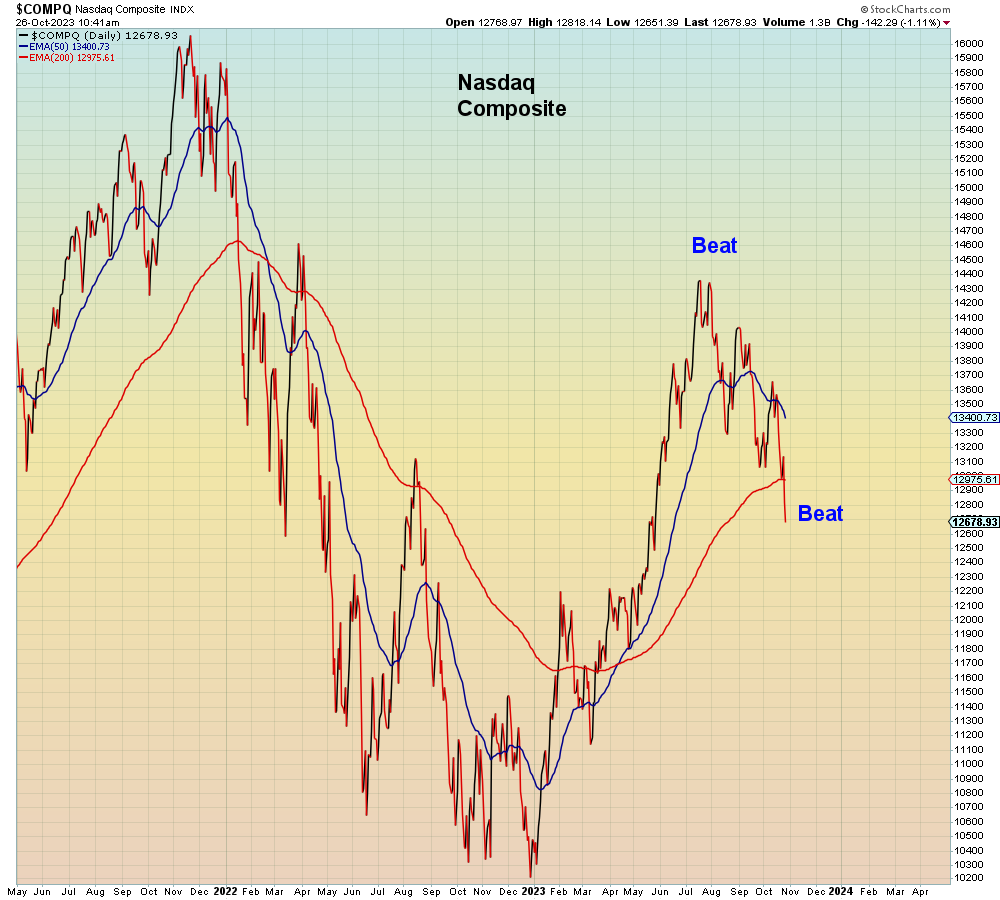It's that time again when bullish investors are tripping over each other to onboard risk ahead of year-end. All signs indicate bulls may have peaked too soon. Again...
Below we see the S&P 500 volume oscillator. While there have been many bear market rallies from this level of oversold, there were no long-term buying opportunities at this current level. In addition, we see that this indicator is now three wave corrective.
Compare this current set-up to the one last year.
On the monetary policy side this week, several Fed members including Powell were yet again forced to inform markets that inflation is not yet under control. This repeating cycle of markets front-running Fed easing followed by a tighter Fed has been repeating for over a year now.
Nevertheless, it's that time of the year when the "seasonals" are positive which means that fund managers are aggressively putting money to work. In addition retail investors have also aggressively switched from bearish to bullish. Notice the pattern below (AAII) of u-turn positioning is deja vu of the all time high in November 2021. Also, crypto Ponzi schemes have been leading the market lately as proof that risk appetite is fully lubricated. Nevertheless, we are informed that crypto Ponzi schemes are a "safe haven" from global markets, just not a safe haven from rampant criminality. It's totally fitting that in the week after Sam Bankman was indicted for massive fraud, that this society is now embracing a level of general market fraud that will make his pissant FTX seem like chump change. Deja vu of Bernie Madoff circa 2008, all eyes are on the small scam artist while the big guys are getting away with deception on a biblical scale. It's like the scene in Airplane! where the old lady is getting the shakedown from security, while armed mercenaries are walking through with machine guns.
One article I read this week couldn't understand how Bankman's upstanding Stanford Professor parents allowed him to commit such fraud. It's easy - we live in a morally dead society. Case closed. No ads to sell.
On the topic of flirting with disaster, global carry traders are now ALL IN the $USD/Yen carry trade despite the fact that the BOJ is removing all easing and the Fed is trying to pause.
This chasmic central bank policy divergence that grew larger and larger for the past two years is now closing, and it's the biggest risk that no one is discussing.
Notice the difference (lower pane) with the $USDJPY now versus during prior Fed pivots:
Another colossal risk being ignored is the total collapse in market breadth. Today, Microsoft made a new all time high which was unconfirmed not only by the Nasdaq 100, but also unconfirmed by every other mega cap Tech stock.
Which is why the Tech/equal weight ratio is now vertical.
And then there's this impending government shutdown which perfectly sets the table for a totally non-functioning government in the depths of winter meltdown. The last Speaker (McCarthy) was shit canned for making a deal to keep the government open, so we are told the new Speaker who is even more conservative will make another deal with Democrats?
Putting it together gives the worst end of year risk profile since 2018. Which was the last time markets imploded at year end.
Bought with both hands.



































